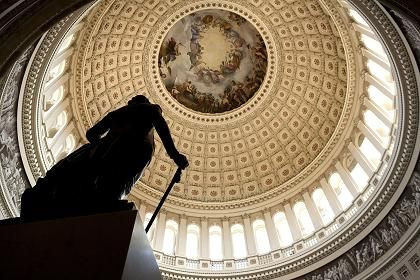Fiscal Cliff: Time Is On The Budget Negotiators’ Side, Yes It Is
Column

As outlined earlier, the so-called “fiscal cliff” isn’t really a cliff, but a slope.
Moreover, while various camps are deploying some of their best rhetoric to convince investors that the U.S. economy will face dire consequences if the budget negotiations between President Barack Obama and congressional Republicans don’t succeed by Jan. 1, 2013, if you're composing your holiday gift giving list (and checking it twice), your time is much better spent on that endeavor. Here’s why:
As noted, none of the tax increases and spending cuts (save the payroll tax increase and extended unemployment benefits) are likely to take effect on Jan. 1, or on Feb. 1, if a budget deal isn’t reached by those dates. Hence, the "dramatic impact" on the economy of a failure to reach a deal is the stuff of hype.
What’s more, so long as Obama and Capitol Hill lawmakers remain rational and dispassionate, they can further lessen any impact the fiscal slope may have by turning it in to a smaller or “bunny slope,” to borrow a skiing metaphor. Congressional leaders can lessen the budget deal’s impact by spreading the tax increases and spending cuts out over a longer period.
The LBJ Method
To be sure, a major agreement on the federal budget is preferred. Oh, would that we had President Lyndon B. Johnson – or at least the spirit of LBJ – in the White House today. Johnson would lock both Republicans and Democrats in an upstairs White House meeting room, then announce, with Texas encouragement, “Now don’t knock on the door to be let out of the room, until you’ve got a budget deal.” But the LBJ era, this isn’t, hence turning the fiscal slope into the “bunny slope” is the most viable tack, and it contains four elements:
Element 1: Instead of letting all of the 2001-2003 Bush income tax cuts on families with income over $250,000 per year and individuals over $200,000 expire, have one-half the income tax cuts expire on Jan. 1, 2013, and the second half expire on Jan. 1, 2014.
The income tax increase for these groups would be about $26 billion to $30 billion per year, depending on the methodology one uses to project federal revenues.
Element 2: Elongate sequestration, the roughly $100 billion in automatic spending cuts - half from the Department of Defense, half from non-defense programs – to three years. Instead, in 2013, cut $20 billion from DOD and $20 billion from non-defense programs, and cut the same amount in 2014 and 2015. Hence, over three years, the total cuts will be even larger - $120 billion as opposed to $100 billion – good for a $40 billion spending reduction each year.
Element 3: Increase the payroll tax that funds Social Security to its normal rate, 6.2 percent, from 4.2 percent, over two years: to 5.2 percent in 2013, and to 6.2 percent in 2014. This would reduce the budget deficit by about $48 billion each year.
Element 4: Let business expense tax write-offs, and other business tax provisions, expire over two years: half in 2013, and half in 2014. This would further reduce the deficit by about $30 billion per year.
A $296 Billion Annual Deficit Reduction By 2015
The aforementioned tax and spending changes would cut the budget deficit by an equal amount -- about $148 billion -- in both 2013 and 2014, which would decrease the projected budget deficit to $980 billion in 2013, and $832 billion in 2014.
Further, assuming tax or spending policies remain the same after 2014 (taxes for couples with income under $250,000/individuals under $200,000 remain the same; extended unemployment benefits continue; estate taxes remain the same; the annual Medicare “doc fix” occurs), and the U.S. economy grows at a 3.0 percent rate, the budget deficit should decline to about $652 billion in 2015, $452 billion in 2016, and $230 billion in 2017.
What’s more, that $230 billion budget deficit in 2017 will occur in a roughly $3.9 trillion U.S. budget – one in which the net interest payment on the national debt will be about $350 billion to $380 billion.
In other words, by deploying merely the “bunny slope” plan of gradual tax increases and spending cuts, the non-debt-service portion of the U.S. budget will be balanced by the end of 2017.
The Task At Hand
Hence, investors, and typical Americans, should not agonize over the current budget talks. The so-called fiscal cliff is really a fiscal slope, and the slope that exists can be converted into a bunny slope - further mitigating any GDP impact - so long as Obama and Congress remain rational and dispassionate. The two parties need to meet in a room and not return until a budget deal is reached.
And when the budget deal is reached, the American people, and probably the late, great LBJ, as well, will be very proud.
© Copyright IBTimes 2024. All rights reserved.





















